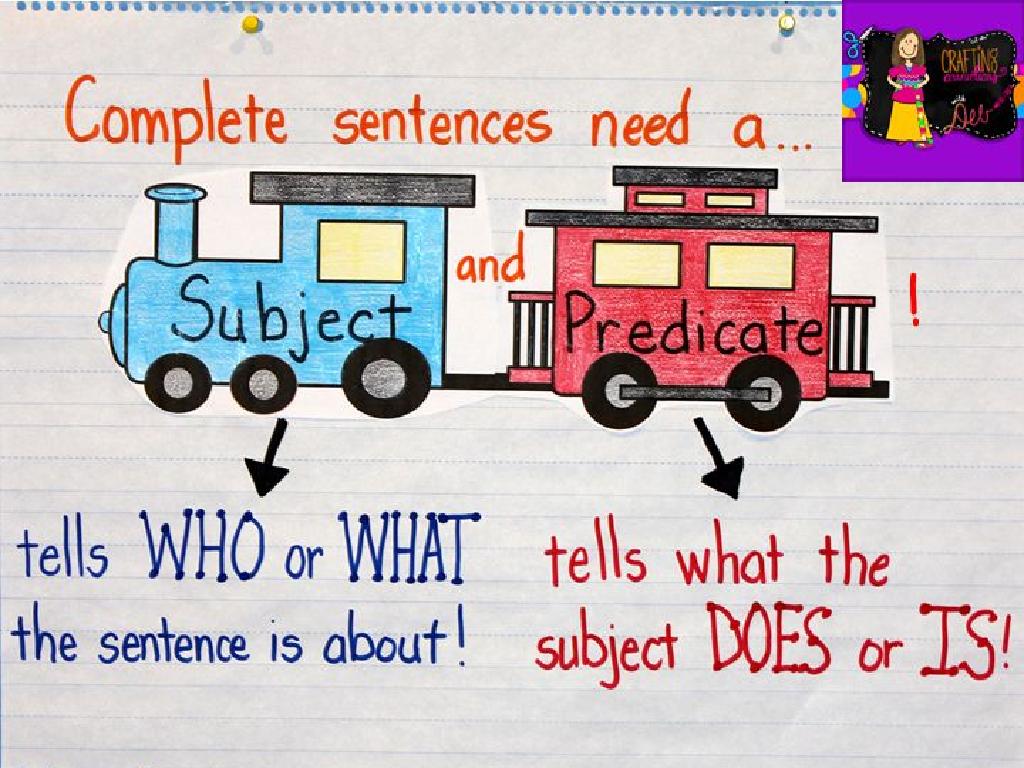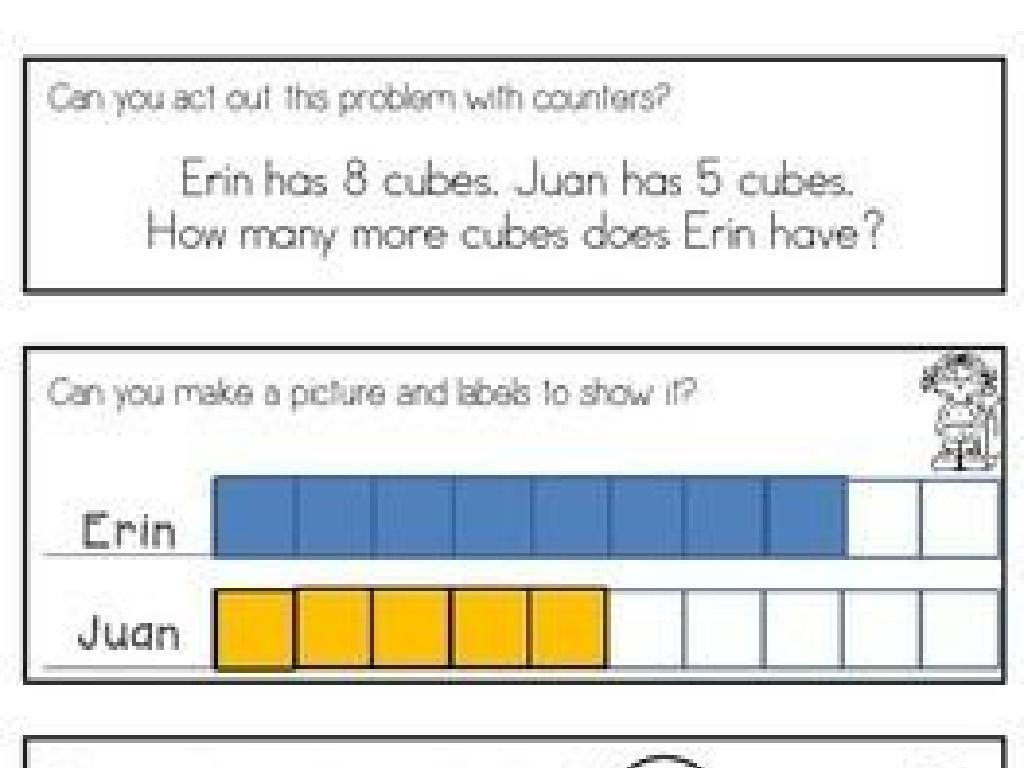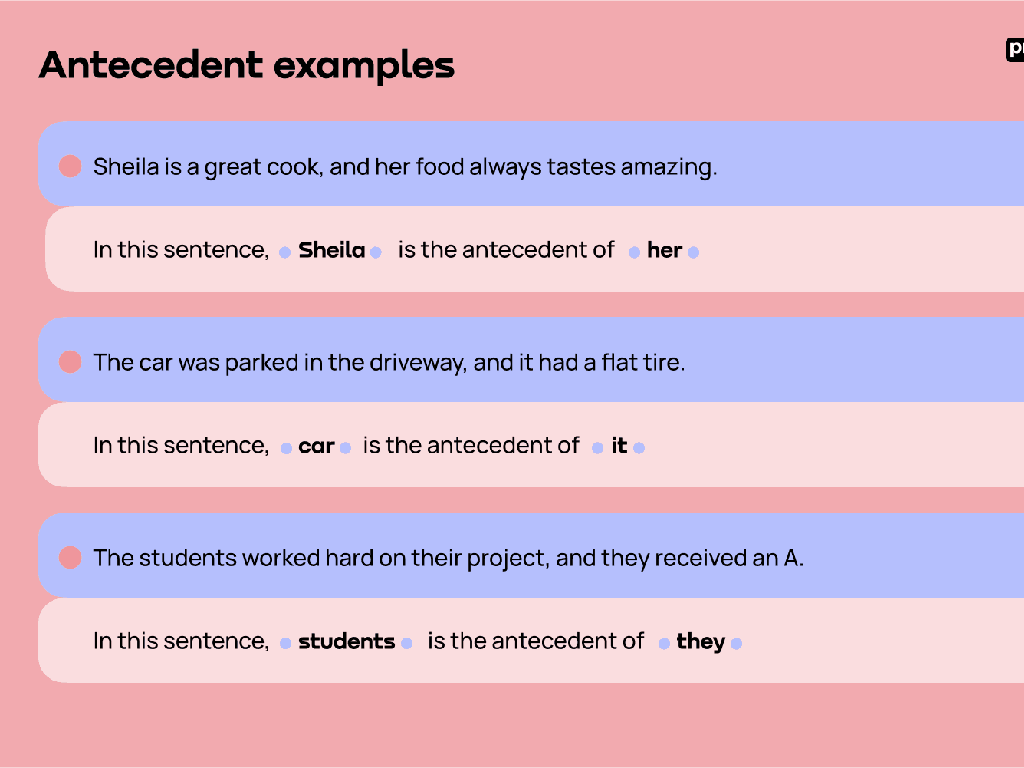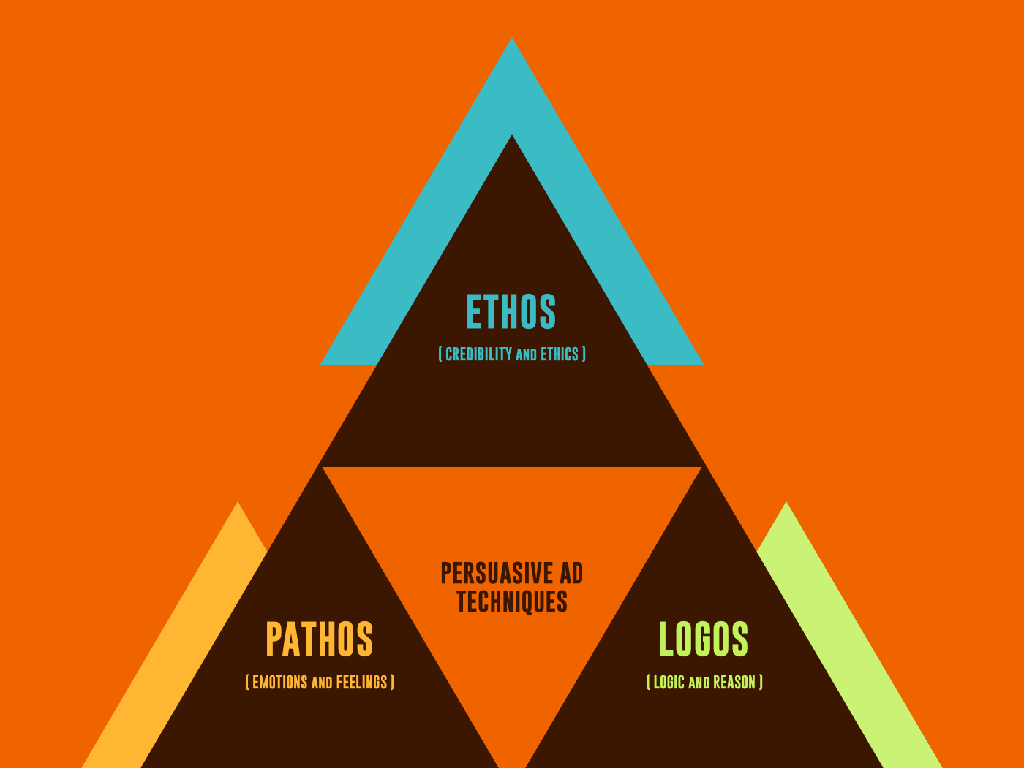Identify Elementary Substances And Compounds Using Chemical Formulas
Subject: Science
Grade: Fifth grade
Topic: Atoms And Molecules
Please LOG IN to download the presentation. Access is available to registered users only.
View More Content
Atoms and Molecules: The Tiny Building Blocks
– Atoms: The Basics
Atoms are tiny particles that make up everything.
– Atoms: Types and Examples
There are different kinds of atoms, like oxygen (O) and hydrogen (H).
– Molecules: When Atoms Join
Atoms link together to make molecules, like water (H2O).
– Exploring Chemical Formulas
Chemical formulas tell us which atoms are in a molecule.
|
This slide introduces the fundamental concepts of atoms and molecules to fifth-grade students. Begin by explaining that atoms are the smallest units of matter, the building blocks of everything we see around us. Highlight the variety of atoms by showing examples such as oxygen and hydrogen. Then, illustrate how these atoms can combine to form molecules, using water as a relatable example. Emphasize that chemical formulas are like recipes that show which atoms are combined and in what quantities to form different substances. Encourage students to think of molecules as special teams of atoms working together. This will set the foundation for understanding more complex chemical formulas and the difference between elements and compounds.
Understanding Elements in Chemistry
– Elements: Chemistry’s Alphabet
– Elements are basic substances that can’t be broken down.
– Unique Symbols for Elements
– Each element is represented by a unique one or two-letter symbol.
– Examples: H, O, C
– Hydrogen (H), Oxygen (O), Carbon (C) are common elements.
– Recognizing Elements in Formulas
|
This slide introduces the concept of elements as the fundamental building blocks in chemistry, akin to the alphabet in language. Emphasize that each element has a unique symbol, usually derived from its English or Latin name, which is used to represent it in chemical formulas. Provide examples of common elements and their symbols: Hydrogen (H), Oxygen (O), and Carbon (C). Explain that recognizing these symbols is crucial for identifying substances and understanding chemical reactions. Encourage students to memorize the symbols of common elements and to practice identifying them in different chemical formulas.
Exploring Compounds in Chemistry
– Compounds: Elements Combined
– Two or more elements chemically joined, like H2 + O -> H2O
– Chemical Formulas: Compound IDs
– Symbols and numbers showing elements and proportions in compounds
– Water as H2O
– Example: H2O means 2 hydrogen atoms joined with 1 oxygen atom
– Recognizing Compounds
|
This slide introduces the concept of compounds to fifth-grade students. A compound is formed when two or more elements chemically combine. Emphasize that compounds have different properties from the elements they are made of. Chemical formulas are like recipes that tell us which elements and how many of each are in a compound. Use water (H2O) as a clear example, explaining that it’s made of hydrogen and oxygen in a 2:1 ratio. Encourage students to think of compounds as teams where elements join hands to create something new. To reinforce learning, ask students to identify compounds in everyday life and bring examples to class.
Reading Chemical Formulas
– Chemistry’s special language
– Subscripts in formulas
– Subscripts tell the number of atoms
– Example: CO2 composition
– CO2: 1 Carbon (C) and 2 Oxygen (O) atoms
– Practice with different formulas
– Find elements & count atoms in H2O, NaCl
|
This slide introduces students to the basics of reading chemical formulas, an essential part of understanding the composition of substances in chemistry. Emphasize that chemical formulas are like a language that tells us what and how many atoms are in a substance. Subscripts are a key part of this language; they are small numbers written after the symbol of an element to indicate the number of atoms of that element in one molecule of the compound. For example, in CO2, the ‘2’ is a subscript that tells us there are two oxygen atoms for every one carbon atom. Encourage students to practice by identifying the elements and counting the atoms in other common compounds like water (H2O) and table salt (NaCl). This will help them become more familiar with the concept and prepare them for more complex formulas.
Elements and Compounds: Chemical Formulas
– Elements in chemical formulas
– Break down formulas into elements
– H2O has Hydrogen (H) and Oxygen (O)
– Practice with familiar compounds
– Explore compounds like CO2, H2O, and NaCl
– Activity: What’s in Salt (NaCl)?
– Find the elements in table salt: Sodium (Na) and Chlorine (Cl)
|
This slide introduces the concept of identifying elements within chemical compounds. Start by explaining that compounds are made up of elements represented by chemical formulas. Show how to break down a formula into its constituent elements using water (H2O) as an example. Engage the class with common compounds like carbon dioxide (CO2) and table salt (NaCl). For the activity, have students identify the elements in table salt, which are Sodium (Na) and Chlorine (Cl). Provide guidance on how to read the chemical formula and relate the symbols to the periodic table. Encourage students to discuss why understanding these formulas is important in science.
Mixtures vs. Compounds
– Mixtures and compounds differ
– Compounds have fixed ratios
– Water (H2O) always has 2 hydrogen for 1 oxygen
– Mixtures have varying compositions
– Salad can have any combination of vegetables
– Air: A mixture example
– Air is made of many gases like oxygen and nitrogen, but not in a fixed ratio
|
This slide aims to clarify the difference between mixtures and compounds for fifth-grade students. Emphasize that compounds, such as water, have a specific recipe with elements in a fixed ratio that doesn’t change. In contrast, mixtures like salads or air can have varying amounts of their components. Use the example of air to show that even though it always contains gases like oxygen and nitrogen, the amounts can vary and are not in a set ratio. Encourage students to think of other examples of mixtures and compounds in their daily lives and be prepared to discuss why air is not considered a compound.
Class Activity: Create Your Own Compound
– Use model kits to build compounds
– Choose elements to combine
– Share your compound with the class
– Explain the chemical formula
– For example, combining 2 hydrogen (H) and 1 oxygen (O) makes water (H2O)
|
This activity is designed to help students understand how elements combine to form compounds. Provide each student or group with a model kit representing different elements. Students should select various elements and attempt to combine them to create a compound. Once they have created their compound, they should write down its chemical formula. Encourage creativity but also guide them to make scientifically accurate models. After building, students will share their compounds with the class, explaining the elements involved and the resulting chemical formula. For example, combining sodium (Na) and chlorine (Cl) to make table salt (NaCl). This hands-on activity will reinforce the concept of chemical bonding and the use of chemical formulas to represent compounds.
Review and Quiz Time on Chemical Formulas!
– Recap: Elements & Compounds
– Remember, elements are substances that cannot be broken down.
– Get ready for a quiz!
– Make sure you have your notes handy!
– Quiz covers key concepts
– Expect questions on everything we’ve learned.
– Elements, Compounds, Formulas
– Understand how to identify substances using H2O, CO2, etc.
|
This slide is designed to review and assess students’ understanding of elementary substances and compounds using chemical formulas. Begin with a brief recap of what elements and compounds are, emphasizing that elements are pure substances that cannot be broken down into simpler substances, while compounds are made up of two or more elements combined in fixed ratios. Encourage students to prepare for the quiz by reviewing their notes, especially on how to identify and differentiate between elements and compounds, and how to read and write chemical formulas. The quiz will test their knowledge on these topics, ensuring they can recognize common substances like water (H2O) and carbon dioxide (CO2) and understand the meaning behind these formulas. Provide a few example questions to guide their study and set expectations for the quiz.
Wrapping Up: Elementary Substances & Compounds
– Congrats on today’s learning journey!
– Homework: Identify 3 home compounds
– Look for everyday items like water (H2O)
– Write down each compound’s formula
– Example: Table salt is NaCl
– Next class: Dive into the Periodic Table!
– Get ready to explore the elements’ big family!
|
Well done to all the young scientists for their hard work today! For homework, students should find three compounds commonly found at home and write down their chemical formulas. This task reinforces their understanding of how elements combine to form compounds. Encourage them to think about water (H2O), table salt (NaCl), and carbon dioxide (CO2) as starting points. In our next class, we will begin to explore the Periodic Table of Elements, which will expand their knowledge of individual elements and how they relate to the compounds they’ve been investigating at home.






